

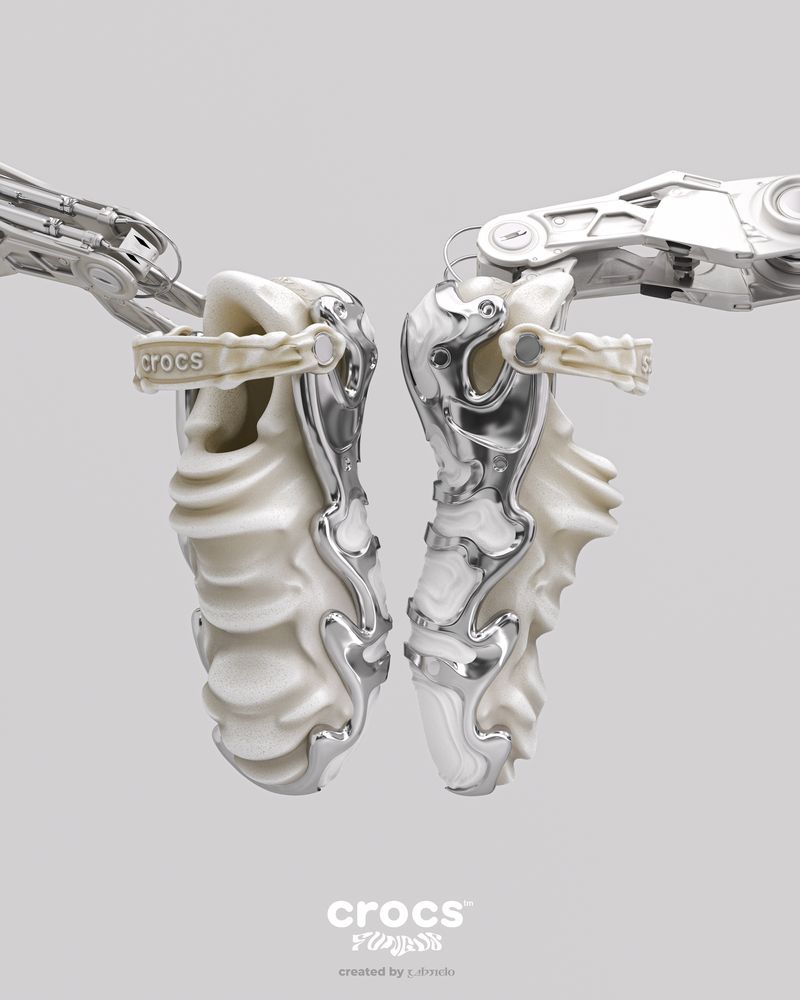

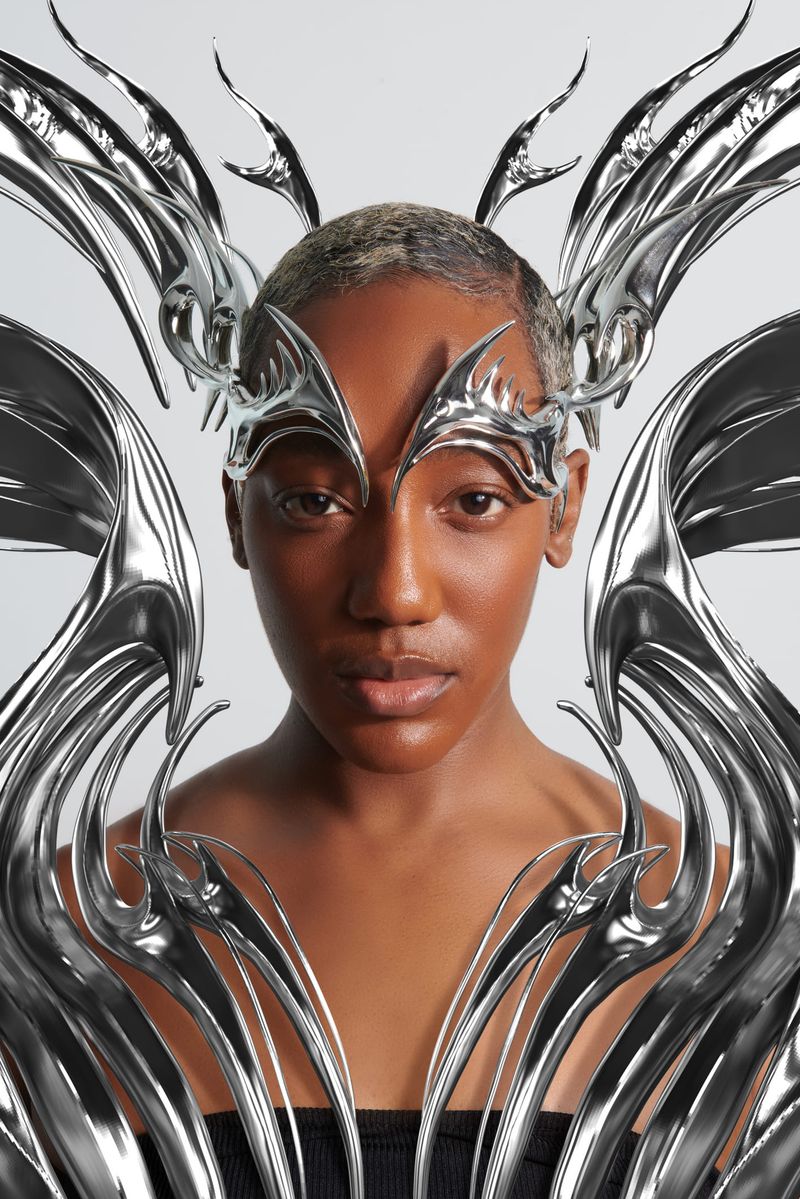

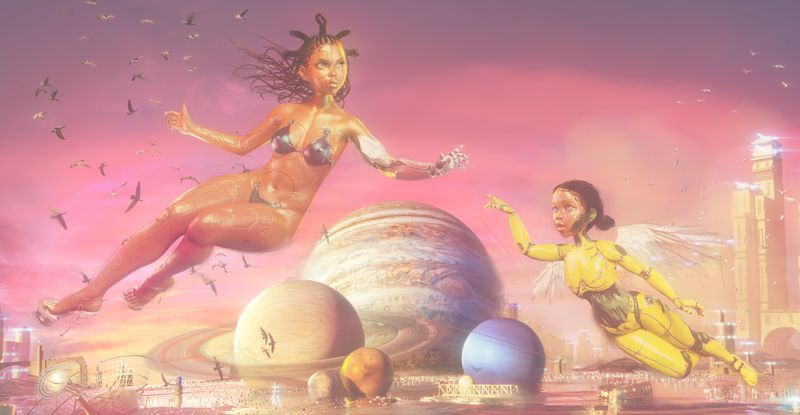


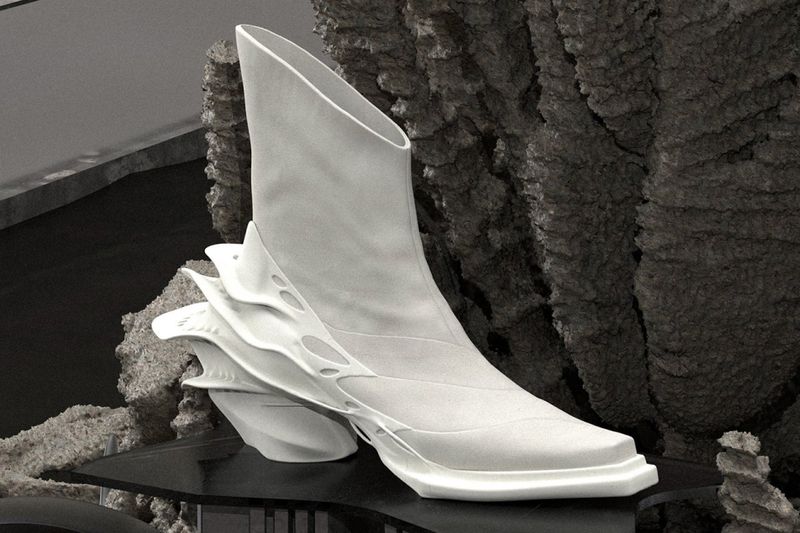
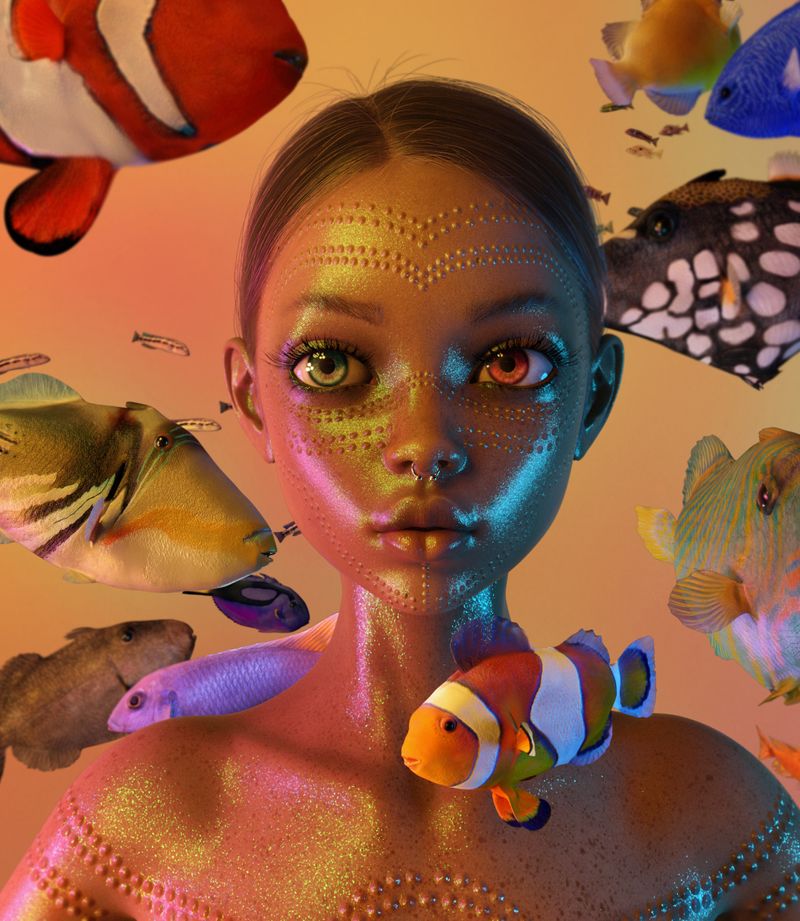
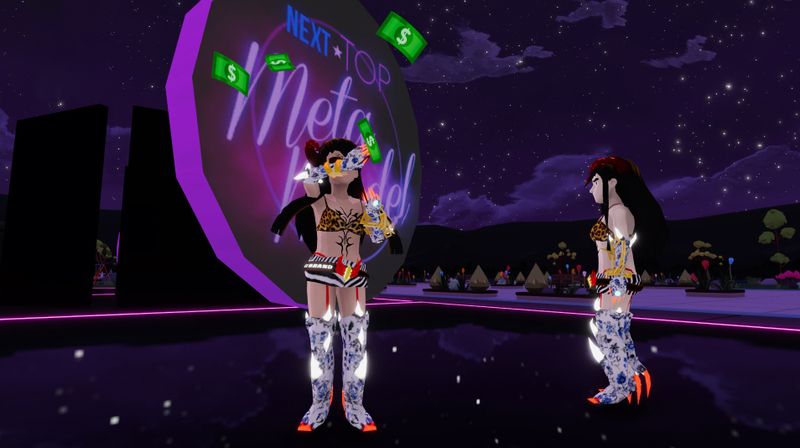
SCRY™ LAB
BEIJING
WORDS BY
In just three years, SCRY™ Lab has secured a loyal following among futuristic sneakerheads. The pioneering, new-wave footwear laboratory is inspired by nature’s silhouettes and sustainable futures, bringing cutting-edge innovation, including a process they call the “Digital Embryo.” SCRY, which means "foretelling the future," might not be doing so through a crystal ball, but through phygital products made by 3D printing and design thinking. SCRY™ Lab’s founders Olivia Cheng and Zixiong Wei discuss how their diverse creative background and inimitable vision create a formula for success; fuelling the brand’s ambitions for today and beyond.

SCRY Stela ©SCRY
Zixiong was particularly passionate about exploring 3D creation, which is how he started the @scccccry Instagram account. The intricate part of it is then translating a virtual sample into the IRL, finding the right material and making sure it's wearable. 3D printing allows endless possibilities for making, but most of the time it's just a tool for creating prototypes, not wearable designs. And four years later, this is where we are now, really trying to create a seamless system of production, from URL to IRL. We are also really conscious of minimizing our carbon footprint, which is why we incorporate sustainability into the very core of our designs. We believe that innovation not only lies in a designer's creative expression but also in eco-conscious practices.
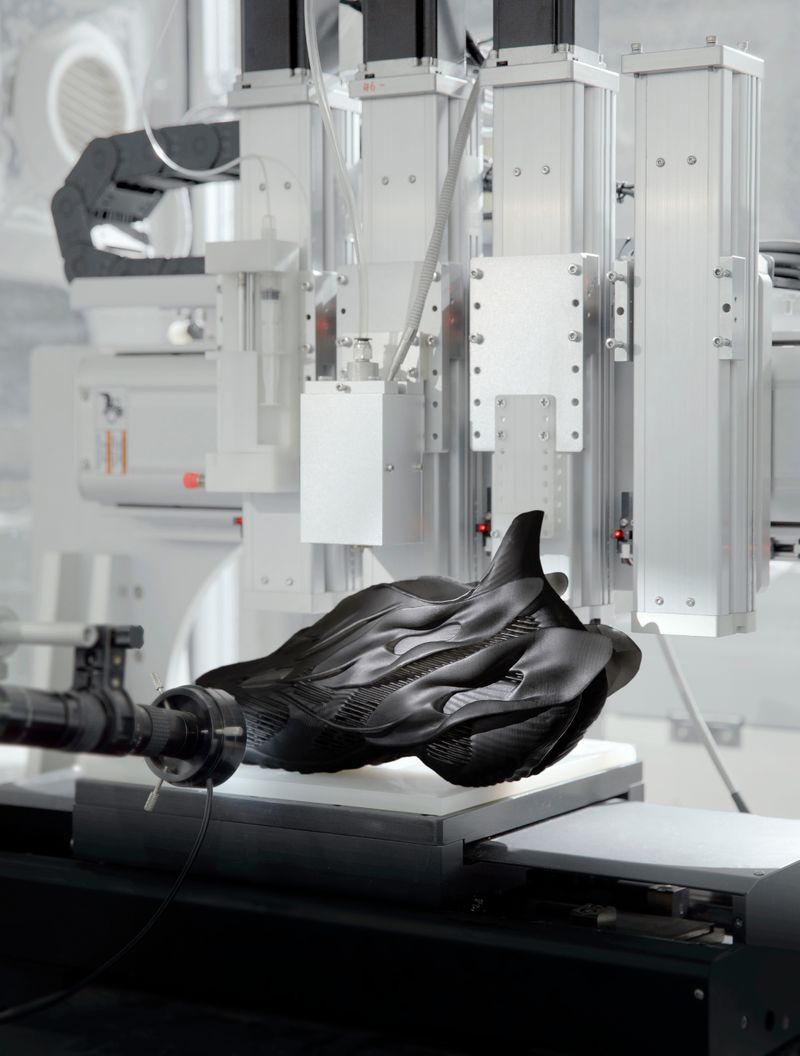
SCRY shuttle beta ©SCRY
"When we think of the future of footwear itself, we think of a new design ecology. The footwear industry is so complex, which gives us this strong desire to challenge how we think about creating new things and how we can develop a more sustainable way of doing it."
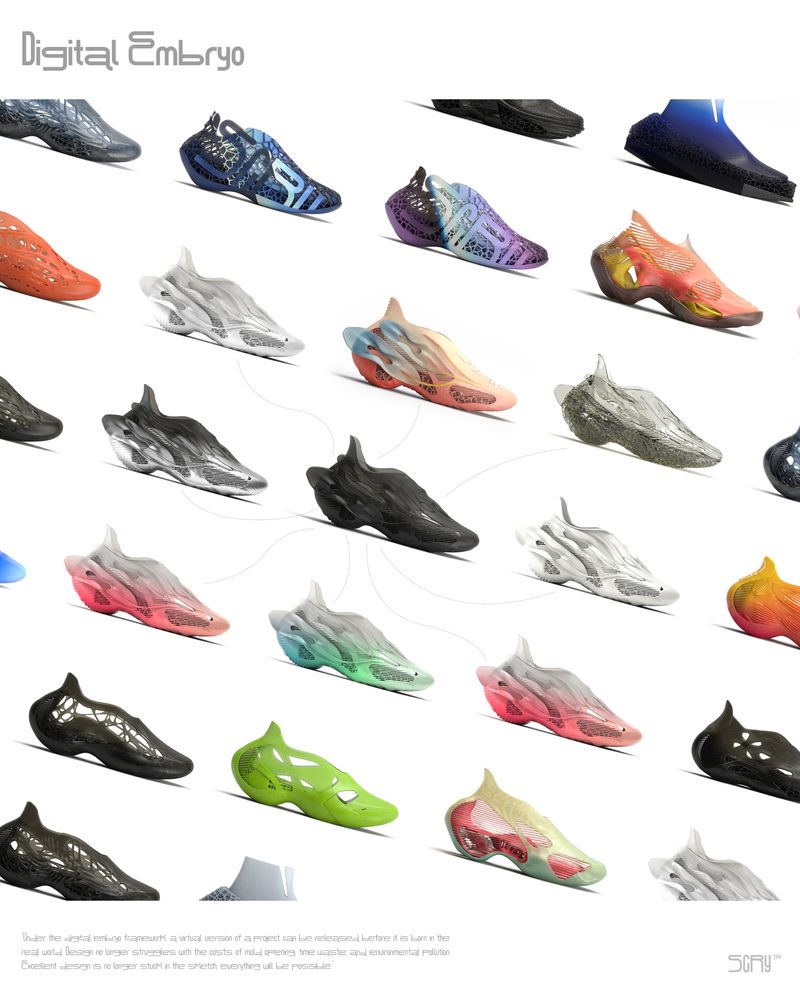
SCRY Digital Embryo ©SCRY
We aim to create new pieces through a completely different
configuration from traditional footwear making. We have "Lab" in
our title so we don't forget where we came from and because we
don't think of ourselves as a traditional
fashion
brand. We are constantly exploring new ways of doing things,
including designs,
technology
and even interaction. We don't think of our consumers as
customers, but as co-collaborators.
When we think of
the future of footwear itself, we think of a new design ecology.
The footwear industry is so complex, which gives us a strong
desire to challenge how we think about creating new things and how
we can develop a more sustainable way of doing it. We want our
studio to be an innovative space, where our team members feel
encouraged to test new things and, if they fail, to try again. We
really hope in the future we can have access to new technology
that can make our wildest visions for footwear come true. We also
want to explore other sides of people's lifestyles, not just
footwear.
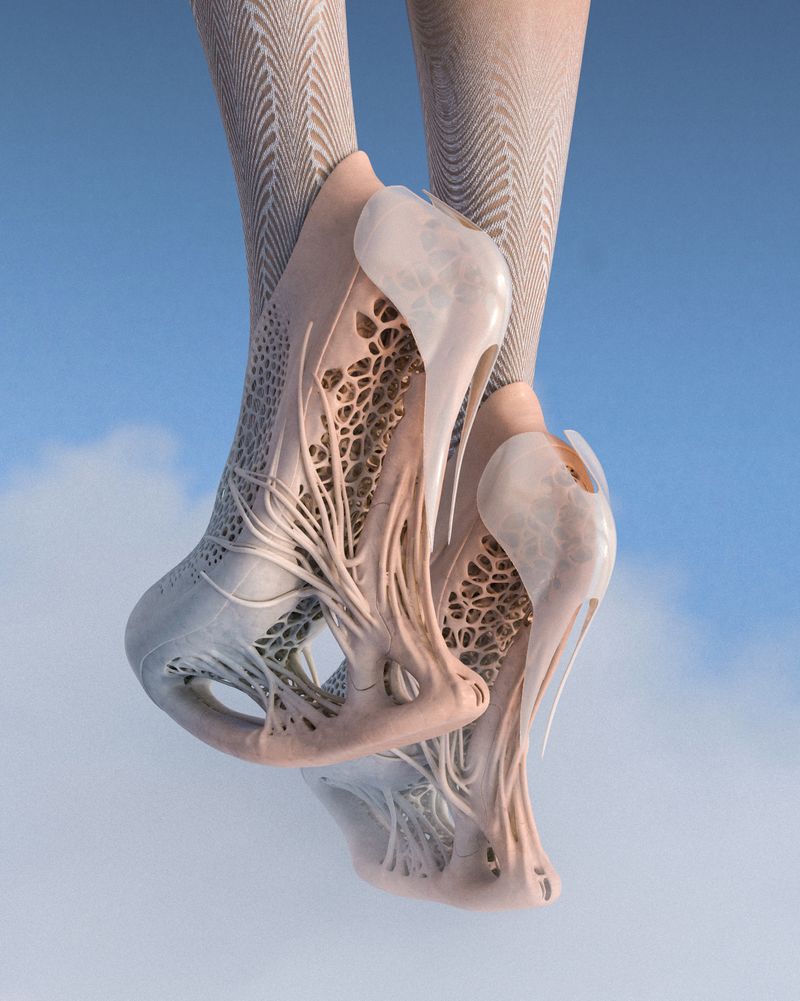
SCRY x Iris van Herpen ©SCRY

SCRY x Showstudio
Digital Embryo is a framework that we use to translate our virtual
creations into the physical world. It is composed of three parts:
digital design, digital manufacturing and digital marketing – this
way, all technologies and departments related to digitalization
can be connected by data to form a different and interesting
footwear ecology.
In terms of collaborations, we’ve
also been invited to collaborate with several top fashion labels
at
Paris Fashion Week
and
Milan Fashion Week
based on the Digital Embryo process. Collaborating with us makes
it much faster and easier for fashion labels to create new
footwear styles. We believe digital is the link connecting a lot
of things, from AI to purchase experience. At the moment, we
define ourselves as a footwear brand, but we are also testing
different things in the virtual world and translating these ideas
to the physical world. One of the new things we tried last year
was collaborating with
Showstudio
and created digital footwear for
Nick Knight’s
fashion photography collection. We also did an
AR
trial in the past, in which our clients could try our designs
virtually. Our current business model is based on a made-to-order
strategy, which allows us to really connect with our clients and
have a lower environmental impact. So for us, it’s important to
develop a framework that can encapsulate all the different
projects we are working on.
We want the core of our designs, regardless of how futuristic they get, to be primarily driven by the natural world and sustainability. Nature not only inspires our visual language but also makes us think of eco-conscious materials to use. Our design language is informed and inspired by nature and its complexity; its shapes, geometry and aesthetics.There is also an element of transhumanism and second skins, but we try not only to focus on futurology. Instead, we want to raise questions about how humans and AI can co-create, rather than replace one with the other. We are proud of how we've managed to blend automation with nature in the product life cycle equation.
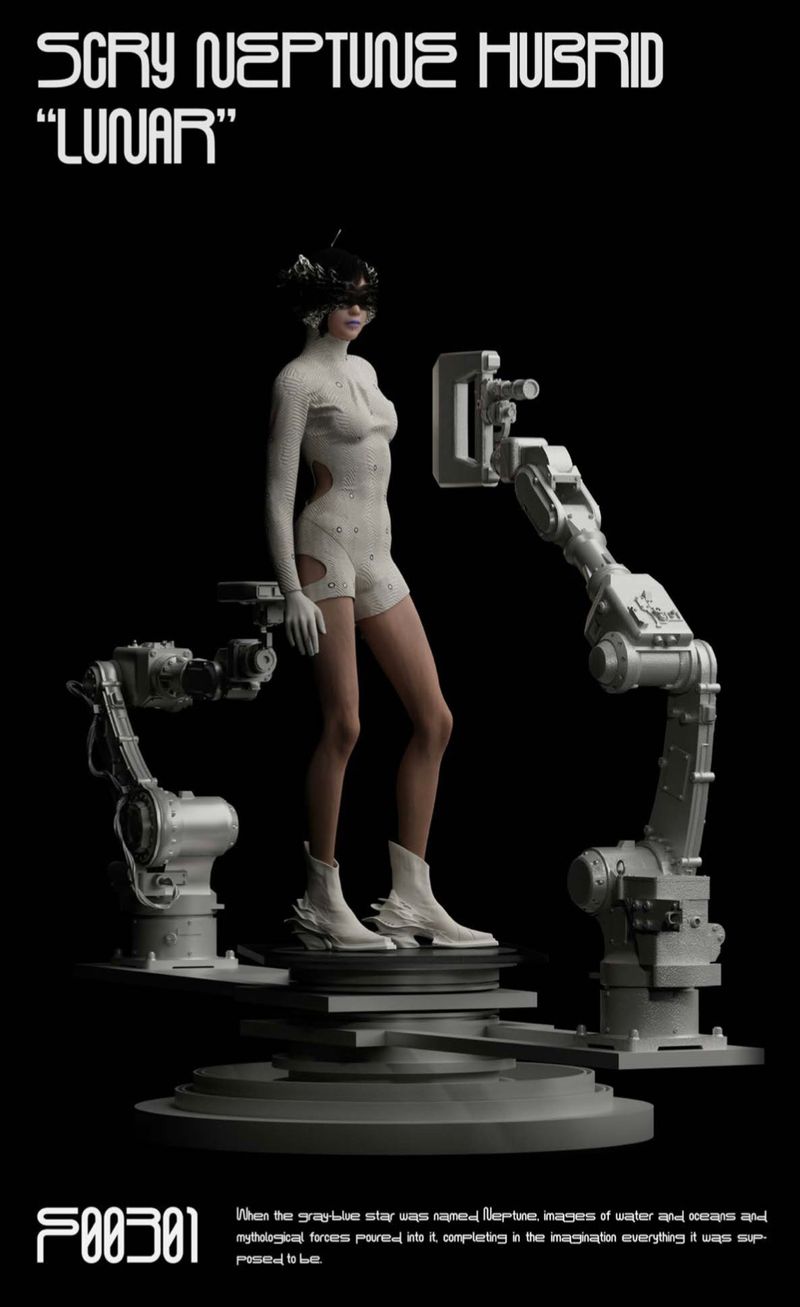
SCRY Neptune ©SCRY
"We believe it's more about raising questions regarding how humans and AI can co-create, rather than replace one with the other."

SCRY Shuttle beta AR trail by follower
Zixiong first used the word “Scccccry” as his designer name before realizing that “Scry” is actually an English word that describes “foretelling the future using a crystal ball.” For us, the future lies within customization, on-demand manufacturing, low design threshold and ultra-high, design iteration capabilities. 3D printing is just one technology we are using at the moment, but there are going to be more. What we really seek to explore is how to simplify traditional footwear manufacturing processes from the beginning to the end of the product life cycle.
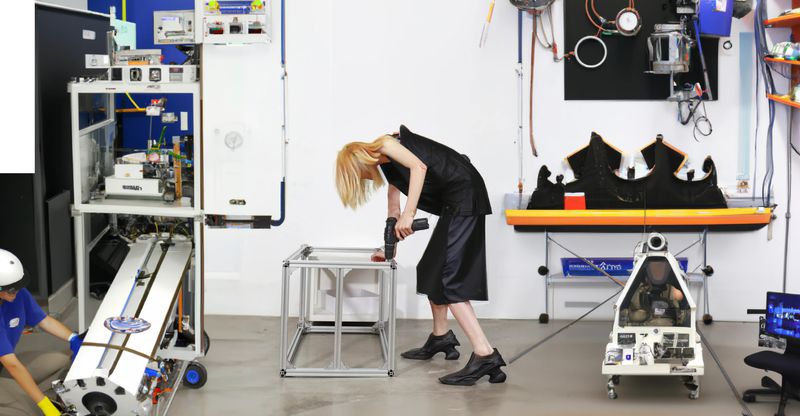
SCRY Thermal runaway
Decentralizing production is something that has been widely talked about for quite some time. However, in our case, even if our client has a desk 3D printer at home, it would not be possible to create a real product that is wearable. The materials we explore and the production system we use keep evolving day by day. We are actually working on a new initiative that will invite our consumers to co-create with us and offer them a more personalized experience, but we can’t share that quite yet.
We always try to be one step ahead of the trend cycle, which is
why we play around with new silhouettes quite often. For this
collection, we wanted our customers to feel this sense of constant
experimentation which is why we placed it in a lab. We think this
lab interference coupled in the chaotic and irregular motion of
the lab environment is a very interesting notion.
Even
if our designs look quite experimental, they are actually still
wearable, it’s one of the things most important to us. We want our
creations to have a function, which is why when we make physical
shoes, we want them to have a comfortable shape. On the other
hand, our digital creations are very experimental and they are
driven by different values. In a virtual ecosystem, shoes are no
longer something you use to cover your feet, they are a dimension
to explore one’s identity and style.

SCRY™ Lab
“In a virtual ecosystem, shoes are no longer something you use to cover your feet, they are a dimension to explore one’s identity and style.”
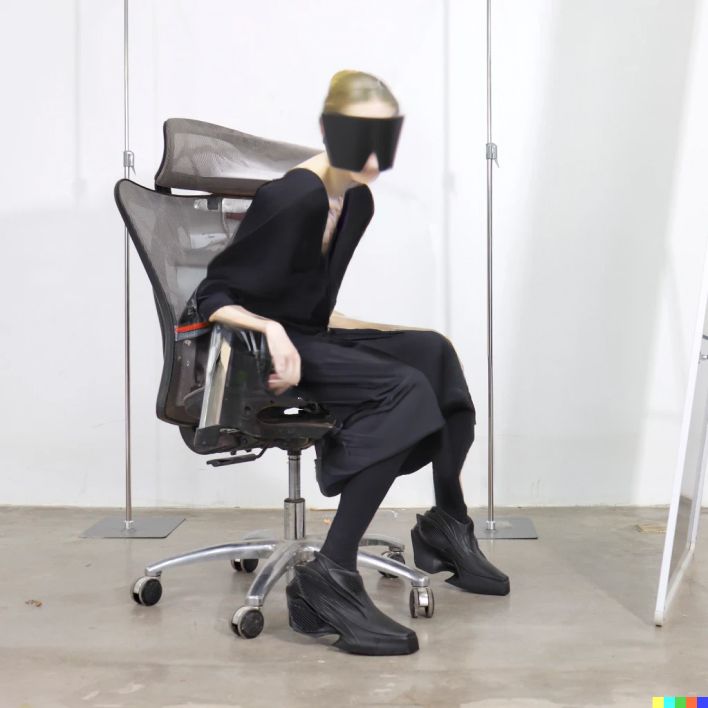
SCRY™ Lab

SCRY™ Lab
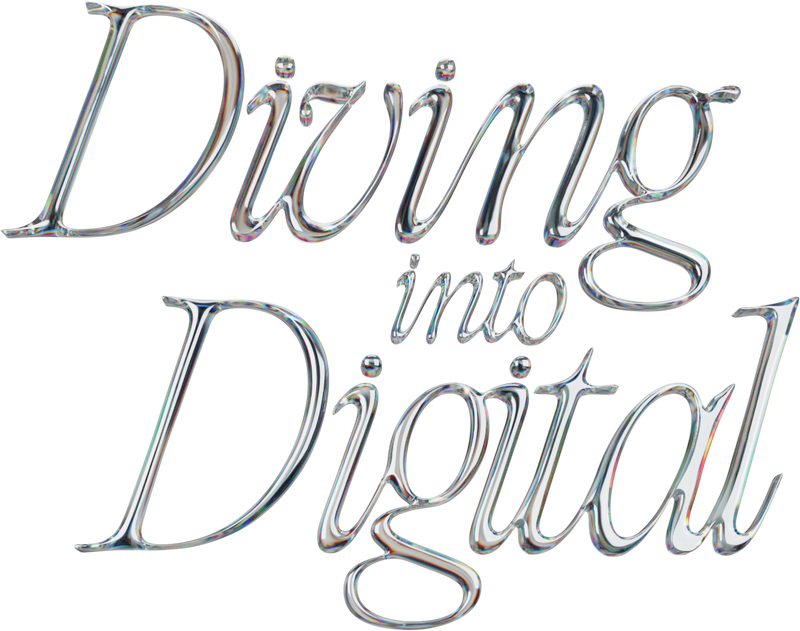
An exploration into digital culture’s influence on IRL fashion, beauty, footwear and design aesthetics.
© 2023 Hypebeast Hong Kong Limited. all rights reserved.